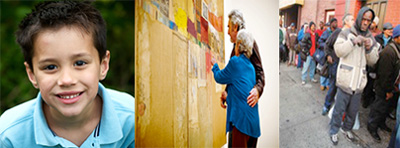
Partners believes traditional institutions – museums and zoos, art groups and historical societies, local foundations and military bases, volunteer groups and faith-based organizations – which are not central players in the public health arena, can be challenged to re-imagine themselves as part of the solution to the health issues facing America’s cities and communities. By bringing more community institutions strategically and thoughtfully into the conversation, Partners believes they can serve as fulcrums of change to improve the quality of life and health in underserved cities and neighborhoods.
Many neighborhood institutions reflect the tradition or culture of the people who live there. Already trusted and beloved by residents, these organizations play a vital role in people’s lives. Because they are woven into the fabric of the community, these conventional institutions are uniquely positioned to take on new roles of social service and economic development.
Institutions that are challenged to take a fresh look at their guiding values in light of public health needs can have a positive and profound impact on community health. Innovative ideas to support health and wellness are springing up all over the country: A church offers healthy cooking courses and support for members of the congregation who are diabetic. A park department functions as a gang-prevention task force. A public market provides health care and preschool services for low- income children. A health care institution sponsors a farmer’s market for patients and employees.
Partners believes that encouraging fresh ideas and sharing best practices are essential to the commu- nity-building and mobilization process. Resurrecting a sense of neighborliness, re-igniting a spirit of caring, creating and cementing connec- tions in the community – these are the core values that can inspire efforts to reach out to others in ways that promote health and wellness.
Partners is working to:
- Meet the health and wellness needs of low- and moderate-income people and neighborhoods
- Support youth development from birth into young adulthood, including mentoring and support for educational achievement
- Support vulnerable older adults to maintain quality of life by meeting such challenges as disability, socialization, and transportation